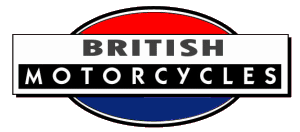

Manufactured by Dorway Sidecars Ltd, 345 Bell Barn Road, Birmingham, 1922-1926
"Another method of using interchangeable bodies is found on Dorway folding sidecars, which possess the additional advantage that the body may be removed in less than a minute and the chassis folded to pass through a 30-in. gateway. With this type it is possible for two people to change a commercial for a touring body within a minute, and this should appeal to those who wish to use their machines for pleasure during the evenings." (1923)
"Amongst the convertible bodies, the example exhibited by Dorway Sidecars, Ltd., of Birmingham, appealed to us as a sound and simple device in which a single-seater, a two-seater, or a sporting body, can replace the trade outfit, the conversion taking only a few seconds to perform." (1925)
"Dorway sidecar fitted with 6 h.p. B.S.A. engine and ... a commercial truck, a touring body with sub-frame and are demonstrating the folding principle of their patent chassis." (1926)
Quotes from the Commercial Motor Magazine
Quickly Detachable Body on Separate Sub-Frame. The Dorway Sidecar to be Adopted by Many Makers.

The medium weight Dorway chassis folded almost completely.

Body removed showing sub frame. Apart from the collapsible chassis there is distinct advantage in a quickly detachable body.

(L)In the lightweight Dorway sidecar the sub-frame locks to the chassis by means of taper sockets in front, and tubular extensions dropping into the sockets at the rear. (R)Spring plungers at two of the four corners lock the sub-frame of the collapsible chassis in the heavier type of Dorway sidecar.
IN the past there have been many attempts to produce a sidecar which will enable the complete outfit to pass through an ordinary doorway.
These attempts have been successful to a very fair degree, but never seem to have caught the public fancy' to any great extent. Now a new folding chassis has been produced by the Dorway Sidecar Co . of Bellbarn Road, Birmingham, and it is arranged to carry a standard complete coachbuilt body and springs, mounted on a light rectangular frame, which can be lifted off when it is desired to fold the chassis alongside the motor cycle in order to pass the outfit through 1 gate or doorway. There are several additional advantages besides the ability for passing through narrow spaces (down to 28in. wide), in that after the removal of the body the inner side of the motor cycle is completely accessible and can be reached for inspection or adjustment just as easily as the off-side. • There are various modifications of the main idea being manufactured at the present time, and these will be seen at the forthcoming Olympia Exhibition on several well-known makes of motor cycle, but in each case the underlying principle is the same and may be briefly described as follows : -
The sidecar attachments are fixed to a stout tube lying parallel with the centre line of the motor cycle; at the front- and rear of this tube are vertical pivots to which the cross members of the sidecar chassis are attached, these cross members are joined by a second tubular member, to which also they are pivoted so that the unit forms a construction similar to a parallel ruler; the wheel is, of course, attached by suitable fixings just in front of the rear cross members. Normally this construction is capable of being moved backwards or forwards so as to be closed up alongside the motor cycle, and it is locked rigidly in the extended position by the tubular sub-frame on which the body is mounted. This sub-frame is rectangular, and at each corner carries pegs, which drop into suitable sockets in the main chassis frame, thus locking it rigidly and preventing any tendency to close.
A Lightweight Pattern.
The light-weight type is so arranged that taper pegs slide into horizontal sockets on the front cross member, while extensions of the rear tube drop into suitable vertical sockets and are held therein by spring clips. In the heavier model double parallel tubes are employed for the cross members, and vertical pegs brazed on at each corner of the sub-frame drop into vertical sockets and are locked at two opposite corners by spring pegs. It should be pointed out that the locking pegs and clips in the two instances mentioned are totally unnecessary as regards safety, but are employed merely to prevent rattles when there is no passenger in the sidecar.
In addition to the advantages enumerated above, the simple method of body attachment provides great scope for the small tradesman who utilises his sidecar with a box body for light deliveries through the week, and can in the space of a few minutes change over to a touring body for week-ends or holiday purposes.
In construction the Dorway chassis is robust, and the workmanship throughout is excellent; all pivot joints are of first-class fit and are packed with grease to prevent rusting up, and the construction is such that the complete outfit is perfectly normal in appearance, any type of flat-bottomed body being suitable.
The Motor Cycle October 19th, 1922. Page 552